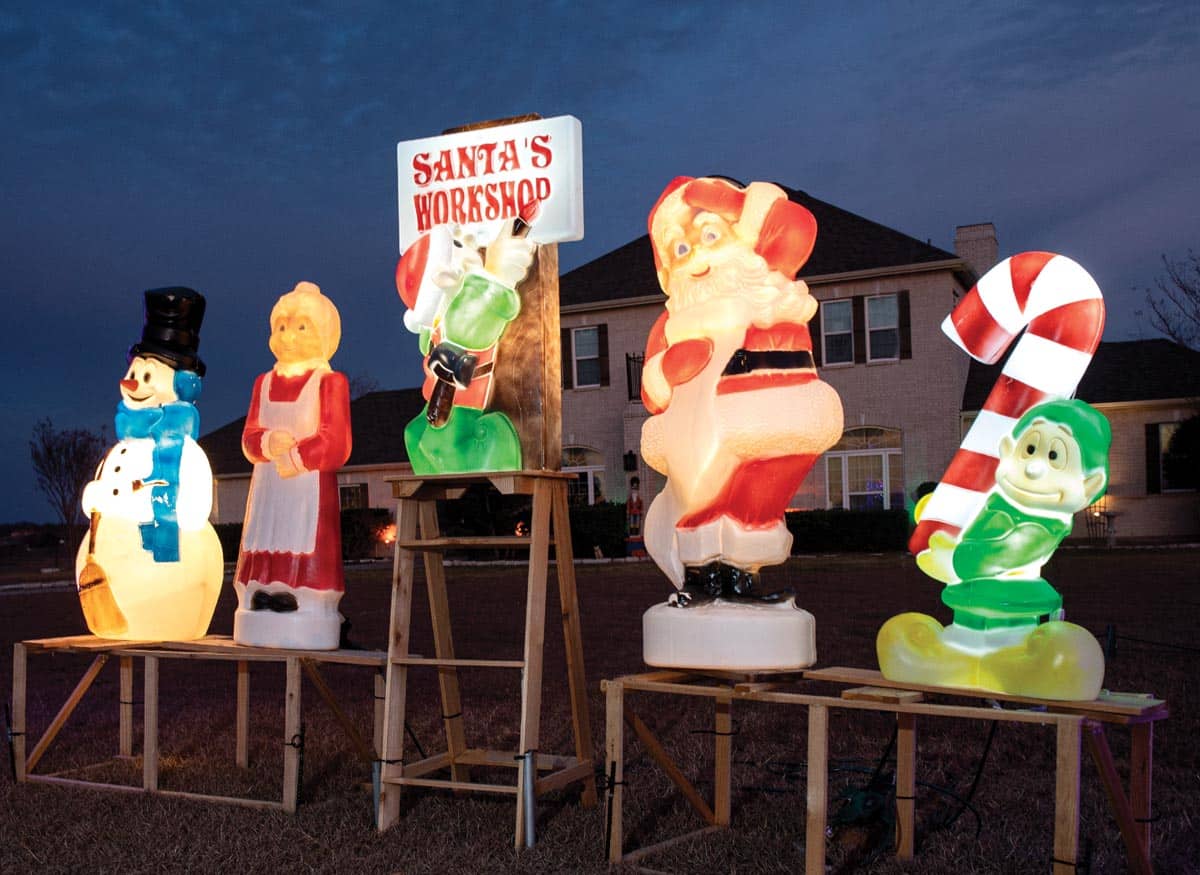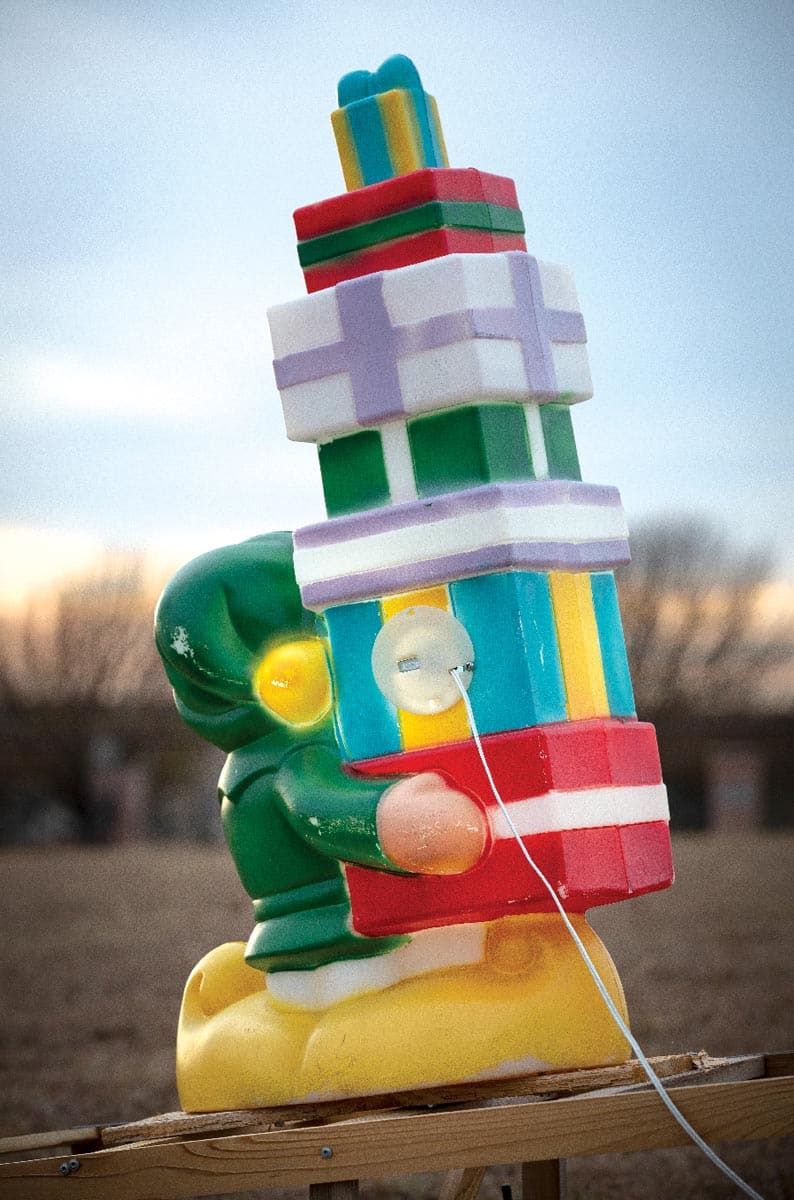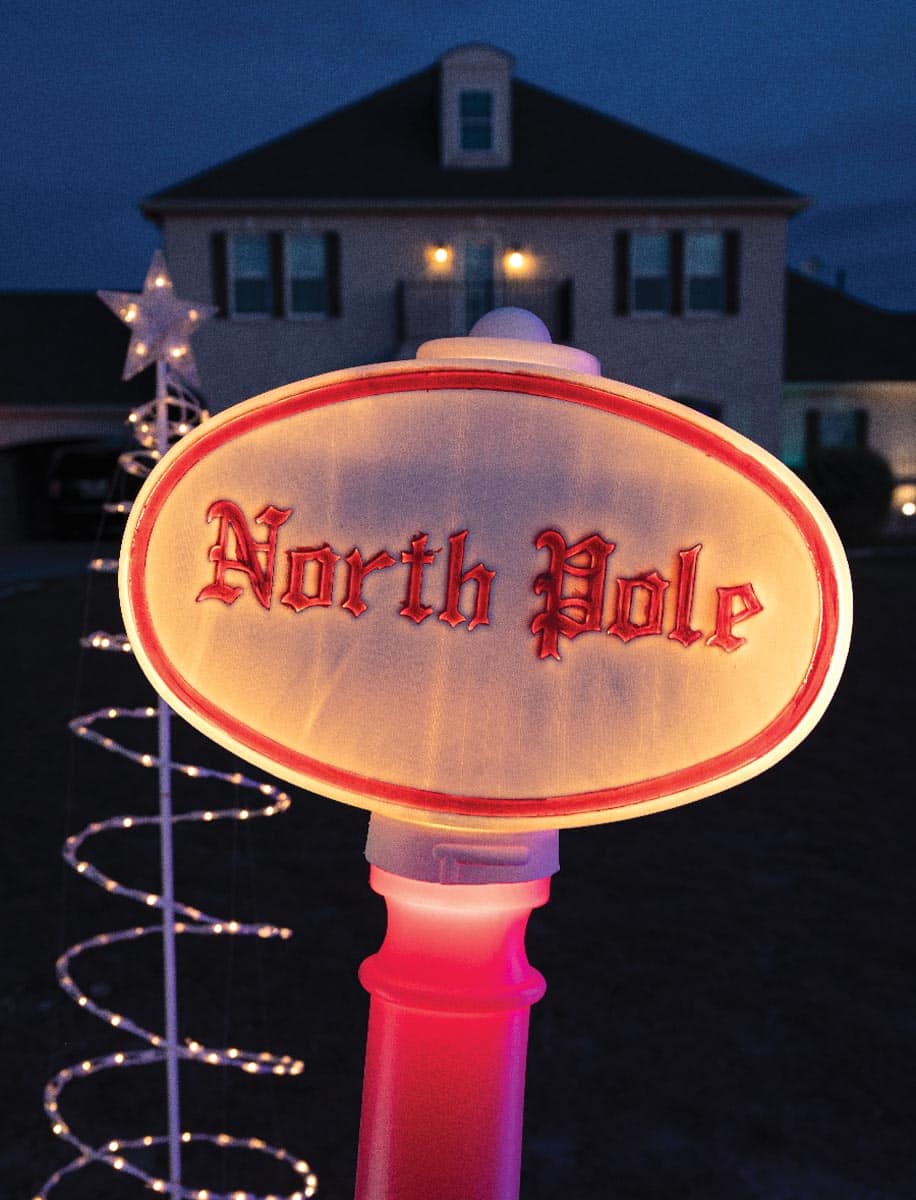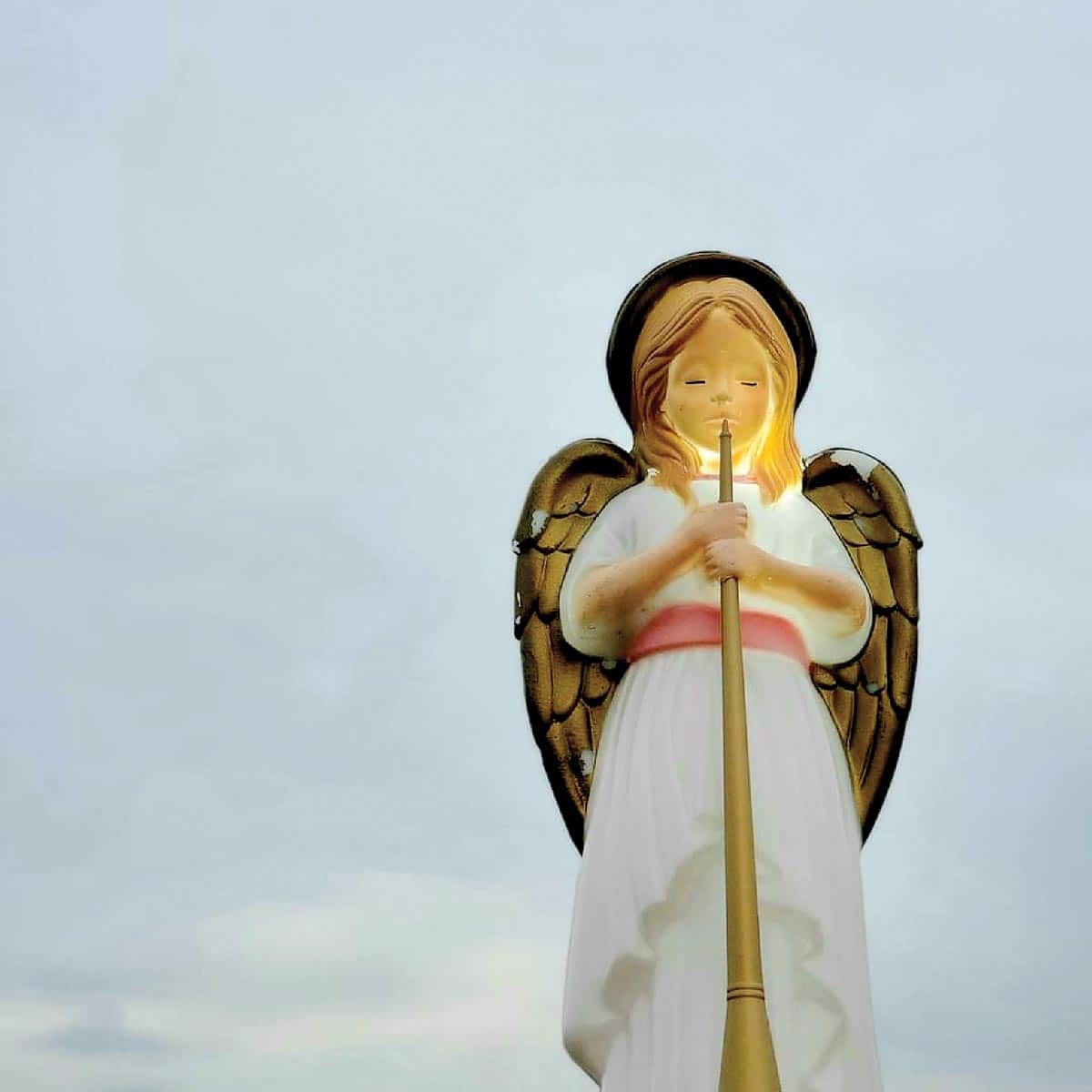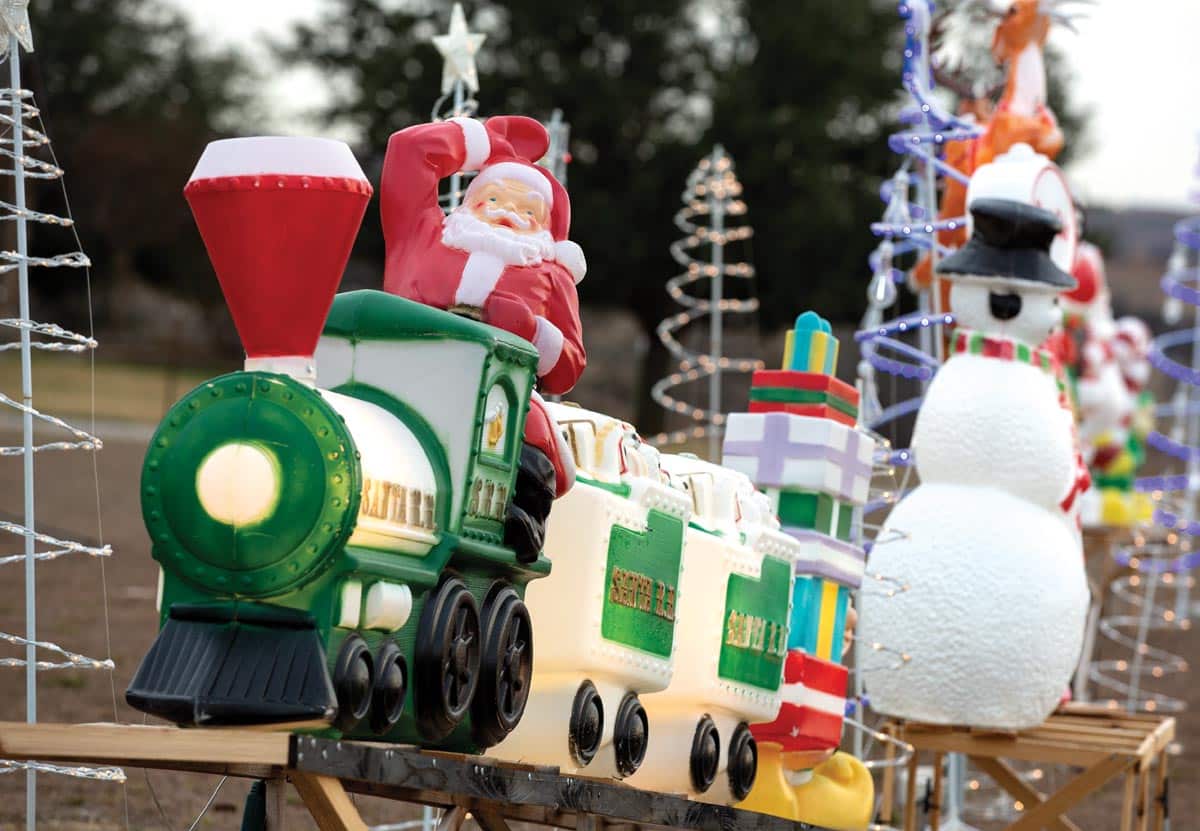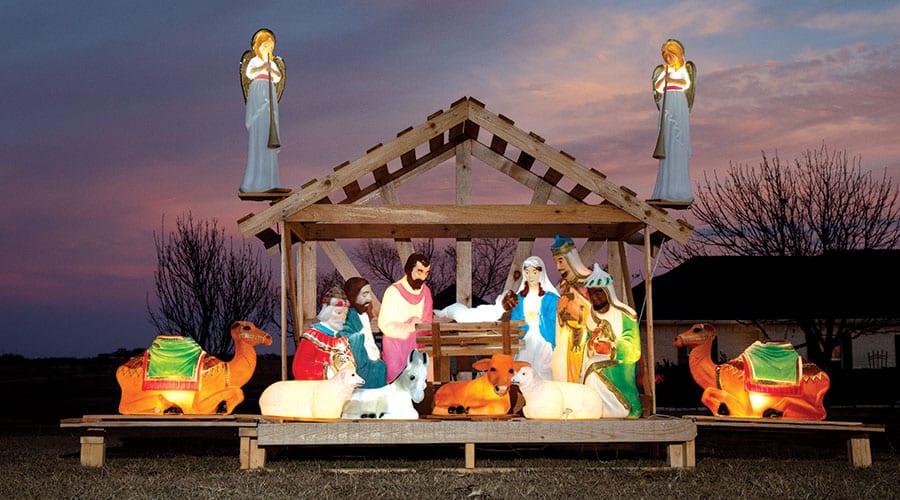
Yard Art
By Meda Kessler
Photos by Ralph Lauer
The wise man was missing a head and Santa’s paint was chipped and faded, but Liz Peters loves her perfectly imperfect blow molds
The setting sun fills the sky with blazing colors, but as the light fades, the flying reindeer, Santa, snowmen, elves and residents of a nearby manger brighten up the darkened landscape.
The blow molds are up for the holidays at the home of Elizabeth and Randy Peters in Aledo. The retired couple — Liz worked at American Airlines and Randy was a mechanical engineer — want to bring joy to their grown kids, their grandchildren and anyone who passes by their sprawling front yard.
While inflatable decorations are prevalent these days (see our Photo Finish on Page 72), the Peterses prefer the nostalgic look of the more durable blow molds.
The technology that allowed the creation of these hard plastic figurines dates back to the late 1800s, but in the 1940s, the industry rapidly advanced. This allowed plastic to be used for containers instead of glass; think milk jugs and water containers. The most common blow mold was the pink flamingo lawn ornament. Some manufacturers, mainly up north in states such as Pennsylvania and New York, segued into Christmas decor, creating forms for everything from snowmen to Santa. (The plastic is poured into a hollow metal mold and air is used to inflate the plastic so it takes the shape of the mold, thus giving the products their name: blow molds.)
Liz has been buying them since 2018. “I’ve never been one to decorate the inside of the house. It was always a challenge with big dogs and little kids to keep ornaments on the tree and presents underneath it,” she says with a laugh. “With outdoor decorations, everyone can enjoy them.”
Liz recalls her grandparents taking her to Wichita Falls, Texas, where a wealthy family in town put up a massive outdoor light display that was later donated to the local university. “They lived on 5 acres and let you walk through the display. It was magical.”
New this year to display is a Santa with a sled that Liz bought just before Thanksgiving from an eBay seller in Mineral Wells (shipping costs are extraordinary, because blow molds are big and heavy, so road trips are preferable). When sleuthing online, she always looks at local sellers first. But her first purchases were new models at a local store. “It was Santa and Mrs. Claus from Ace Hardware. They were the old-style blow molds, not some of the glittery ones you can find today.”
While she has a no-sparkle rule, she’s OK with figures that have some character and worn paint, as long as they don’t need too many repairs. “Randy figured out that a light coat of spray paint works best to touch up colors. In the case of a sled I bought that was unpainted, he created the entire look.”
Randy, with part of his garage now a workshop, also builds new props, such as wood skis for a Santa whose plastic ones had pretty much disintegrated thanks to sun damage. He built a wood manger for the Nativity scene and elevated wood tracks to make Santa and his train more visible. The blow molds are secured on their stands to keep them upright and prevent them from going home with any Grinch types who might be lurking.
As they typically come with one light socket, Randy sometimes wires in a second one; using LED bulbs also helps brighten the scene.
The biggest purchase was the 16-piece Nativity scene, which had a wise man missing a head (Liz found a replacement for about $100, including shipping) and Mary sporting a hole in the back of her noggin (fortunately, it is not visible from the front).
“The plastic gets brittle due to all the time the blow molds spend outside,” says Liz. “In the offseason, they’re well taken care of, as they all are stored in our guest house.”
She already has passed a few pieces on to one of her daughters and hopes to give more to her grandchildren when they get older. “Until then, Randy and I enjoy not only the thrill of the hunt but knowing how they make people happy.”

